|
61. Polyommatus semiargus (Rottemburg, 1775) / Mazarine blue / Lycaenidae – Polyommatinae
NL: klaverblauwtje / D: Violetter Bläuling, Rotklee-Bläuling, Violetter Wald-Bläuling / F: demi-argus, azuré des anthyllides
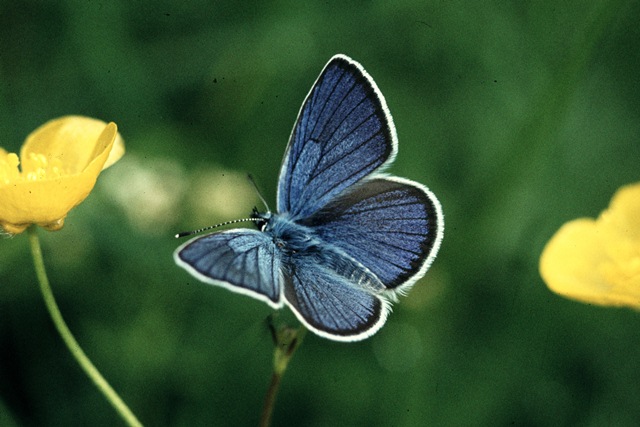 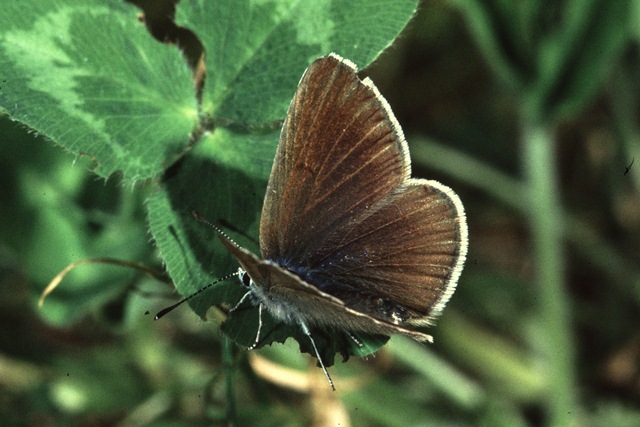 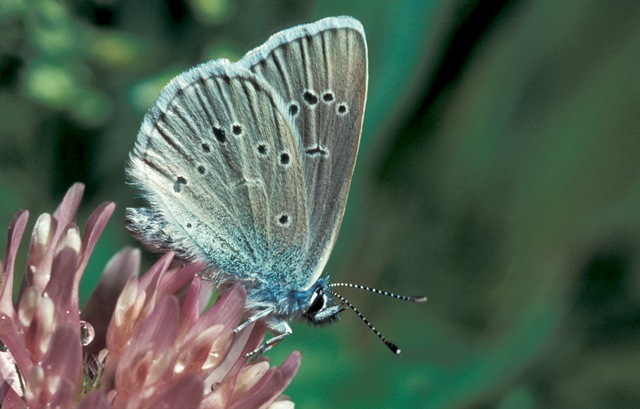
Photographs: Frits Bink ©.
Small, wing length 15 (13-17) mm. In the Benelux, the species occurs widely spread in Luxemburg and Wallonia, in Flanders today only in the eastern part and in the Netherlands irregularly in south Limburg. In the Benelux, it has stable populations in meadows with red clover on humid soil.
Butterfly is on the wing from mid-May until mid-September, peaks late-May and mid-August. It is known from maritime and severe continental climates, amplitude 5 to 20. Required heat sum is 500°d, maximum tolerated 2200°d, corresponding climate windows are 21 and 37 weeks.
The ovipositing female butterflies insert a single egg in a flower head where the young larva feeds on the unripe fruits, later when half grown, on the young leaves. In temperate climates red clover (Trifolium pratense) is a very good host-plant, in meadows used for hay making or cattle grazing this plant flowers for a long period during the year and the butterfly can produce several generations per year. However, in cold climates the growing season is short and only one brood per year can be produced; under those circumstances Trifolium ochroleucon is a useful host. In Mediterranean climate the species uses a different host-plant, Armeria maritima (Plumbaginaceae). In the Coto de Doñana, South-Spain, this plant species flowers only early in the season, so the butterfly can produce only one brood per year in spite of the warm climate.
Ecological characteristics
Behaviour over time
Overwintering: larvae in third instar, hidden in litter layer.
Reproduction: oviposition starts after 4-6 days when the body contains 116 (100-133) eggs, estimated potential production 1.4 times as much.
Larval feeding periods: summer brood 23 (17-28) days, when overwintering about 24 days in late summer and in next spring 32 (26-34) days.
Generations: usually two, sometimes three.
Spreading of risk: flexibility in diapause.
Life cycle: egg 4 (3-6) days; larva 4 weeks in summer, in the case of overwintering 29-43 weeks; pupa 14 (11-17) days.
Life span of adult: rather long, 3 weeks.
 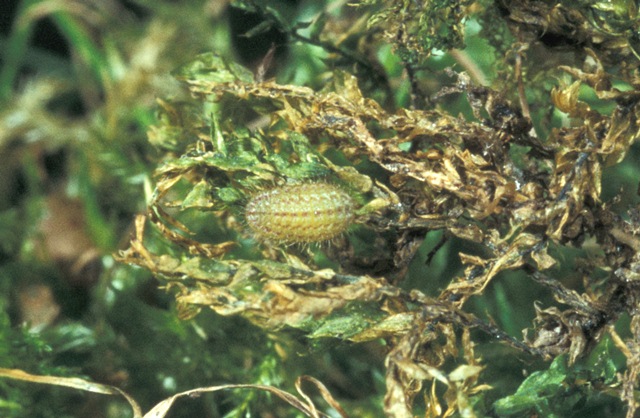
Photographs: Frits Bink ©.
Behaviour in space
From stay-at-home to migrant: stay-at-home, spatial requirements modest.
Finding a mate: male perches but also congregates on roosting and drinking sites.
Orientation in the landscape: open field or edges of woods.
Oviposition: inserts into flower heads.
Defence
Threats from other organisms: larval hides during development inside flower heads.
Myrmecophily: moderate, although full array of ant-attracting and appeasing organs are present.
Threats from the environment: change in vegetation by natural succession.
Feeding habits
Adult: all kinds of flowers, drinking on urinated spots.
Larva: specialist, living when young in flower head, later on young shoots.
Larval foodplants
Plant species: Fabaceae, Trifolium pratense.
Journal
Rearing experiment based on specimens from Goviller, Mont d’Anon, Lorraine, France:
28 July 1983: three females captured from a dry, grazed meadow.
2 August: eggs hatched.
9 August: larva fed like Cupido minimus, bored a hole in the calyx and ate the young fruits.
28 August: one larva in second instar, one nearly fully grown.
Overwintered outdoors.
14 March 1984: pot taken indoors, there was already some feeding evidence on the young leaves.
20 March: one larva moulted to L4, lateral organs clearly visible.
24 March: larva mined in the young shoot and the presence of wilted leaves indicated that the larvae had bitten through the stem.
2 April: larva moulted into last instar.
10 April: larva nearly fully grown, 12 mm in length, and ate young leaves.
16 April: prepupa observed.
19 April: pupated, girdled pupa in a loose shelter.
6 May: pupa hatched, male.
Table 61-1. Results of dissections

Table 61-2. Collection and observation localities
D, Staffelstein 50° 05’ 32”N – 11° 01’ 25”E; 16 June 1985.
DK, Frøstrup 57° 05´ 48”N – 8° 52´ 54”E; 13 June 2004.
F, Montmédy, 217 m, 49° 31’ 07”N – 5° 21’ 33” E; 18 August 1984.
F, Lorraine, Goviller, Mont d’Anon, 438 m, 48° 30’ 19”N – 6° 00’ 48”E; 28 July 1983.
F, Vosges, Wintzfelden, 351 m, 47° 59’ 01”- 7° 12’ 32”E; 11 June 1984.
F, Vosges, Zimmerbach, 270 m, 48° 04’ 25”N – 7° 14’ 45”E; 11 June 1984.
S, Gotland, Ljugarn 57° 22’ 03”N – 18° 41’ 31”E; 17-7-1982; 28 July 1982, 21 June 2004.
S, Stockamöllan, Skåne 55° 56’ 36”N – 13° 23’ 55”E; 26 June 1984.
Fig. 61-1. Polyommatus semiargus, phenogram adapted from Fichefet et al. 2008: 143.
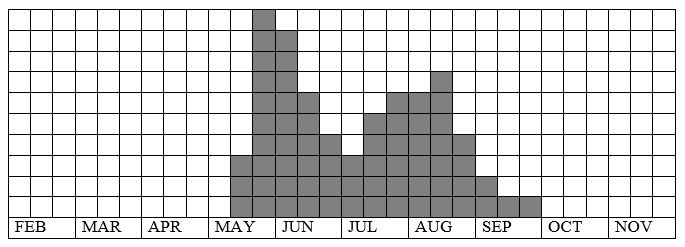
Fig. 61-2. Polyommatus semiargus, habitat characteristics.
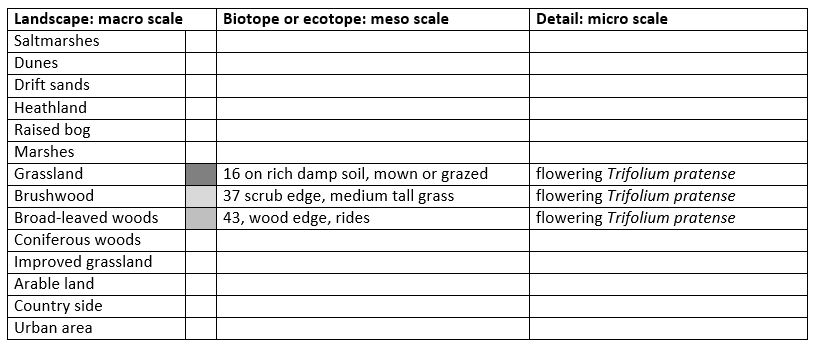
Fig. 61-3. Polyommatus semiargus, climate matrix, heat-sums 500 - 2200°d.
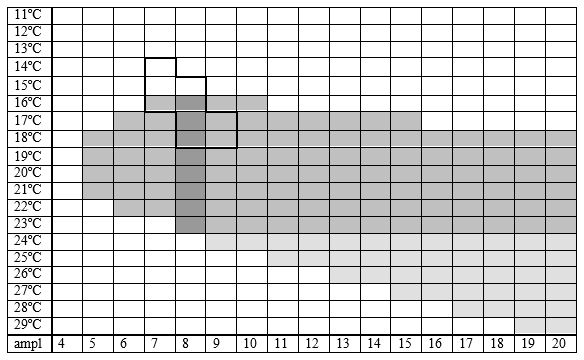
|










